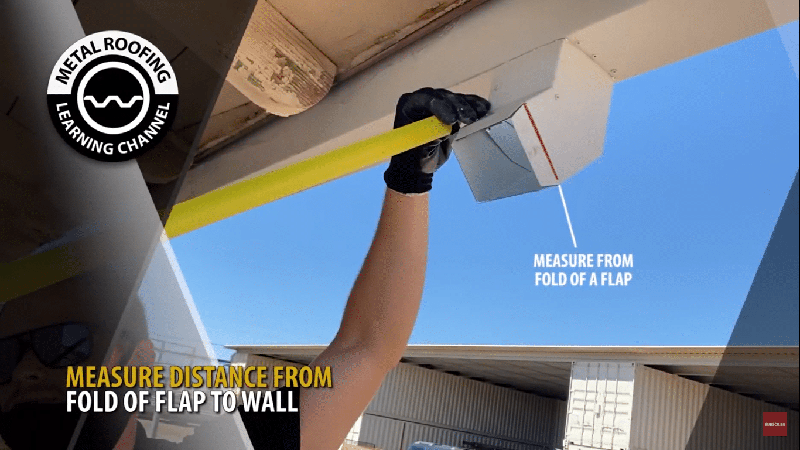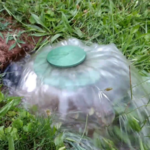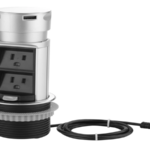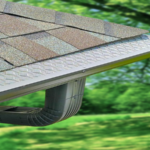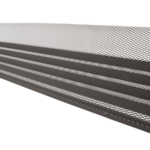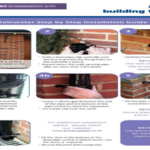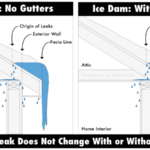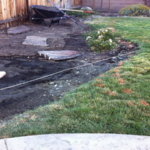- Locate the area where you want to install the drain. Mark the location of the drain with a stake or spray paint.
- Dig a trench that is about 6 inches wide and 18 inches deep. The trench should be sloped so that it drains away from the house.
- Line the trench with gravel. This will help with drainage.
- Place the drain pipe in the trench. Make sure that the drain pipe has holes in it so that water can drain through.
- Cover the drain pipe with more gravel.
- Cover the trench with soil. Tamp down the soil so that it is compacted.
- Install a catch basin at the end of the drain pipe. This will collect any water that drains through the pipe.
- Cover the catch basin with a grate so that debris does not clog the drain.
How do you install an underground gutter drain?
- To install an underground gutter drain, you will need to dig a trench from the gutter down to the desired drainage area.
- Next, you will need to install a perforated drain pipe in the trench and cover it with gravel.
- Finally, you will need to connect the gutter to the drain pipe using a fitting and then cover the trench with soil.
- If you are installing the drain pipe in an area that is prone to flooding, you may also need to install a check valve at the end of the pipe to prevent water from flowing back into the gutter.
How deep should underground gutter drains be?
- Underground gutter drains should be placed at a depth that will allow them to effectively collect and transport water away from the foundation of your home.
- The depth of your underground gutter drains will be determined by the amount of rainfall your area receives and the slope of your property.
- It is important to ensure that your underground gutter drains are placed at a depth that will allow them to function properly and prevent water from seeping into your home.
- If you are unsure of the depth that your underground gutter drains should be, you can consult with a professional to ensure that they are installed correctly.
What is the best pipe to use for underground gutter drainage?
There are a few factors to consider when deciding on the best pipe to use for underground gutter drainage. The first is the material the pipe is made of. The most common materials used for underground pipes are PVC and ABS. PVC is more durable and has a higher resistance to corrosion than ABS. The second factor to consider is the size of the pipe. The larger the pipe, the more water it can handle. The third factor to consider is the slope of the pipe. The steeper the slope, the faster the water will flow through the pipe.
Are underground gutter drains worth it?
Yes, underground gutter drains are definitely worth it! Not only do they keep your gutters from getting clogged with leaves and debris, but they also help to protect your foundation from water damage.
Is burying downspouts a good idea?
There are a few things to consider when deciding whether or not to bury your downspouts. One is the amount of rainfall your area typically gets. If you live in an area with a high amount of rainfall, it’s a good idea to bury your downspouts to prevent water from pooling around your foundation and potentially causing flooding or water damage. Another thing to consider is the type of soil you have. If you have very sandy soil, it’s likely that water will drain quickly and you won’t need to worry about pooling. However, if you have clay soil, it will absorb water more slowly and you may need to bury your downspouts to prevent water from sitting on the surface and potentially causing foundation problems.
How much does underground gutter drainage cost?
The cost of underground gutter drainage can vary depending on the size and location of your home. The average cost for a basic system is around $1,500, but it can range from $500 to $5,000. If you have a larger home or more complex needs, the cost can be higher.
Can you drain gutters underground?
There is no right or wrong answer to this question since it depends on the specific needs of the home or building in question. However, some experts argue that underground gutters can be more effective at draining water away from the foundation of a home or building, which can help to prevent flooding and water damage. Additionally, underground gutters can be less likely to freeze in cold weather, which can also help to prevent flooding and water damage.
Bottom Line
If you’re looking to install an outside underground gutter drain, there are a few things you’ll need to keep in mind. First, you’ll need to make sure you have the proper tools and materials. Second, you’ll need to be aware of any potential obstacles in your path. And finally, you’ll need to take your time and be careful to avoid any mistakes. With a little bit of planning and care, you should be able to install your drain without any problems.
